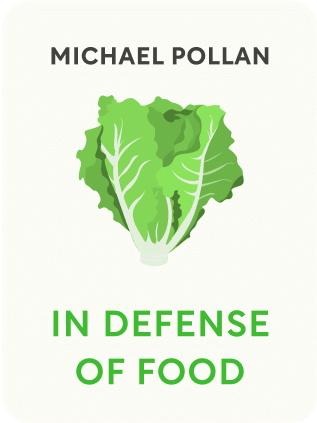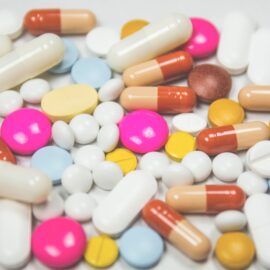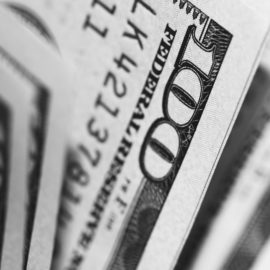

This article is an excerpt from the Shortform book guide to "In Defense of Food" by Michael Pollan. Shortform has the world's best summaries and analyses of books you should be reading.
Like this article? Sign up for a free trial here .
What is real food? How can you tell which foods are real, that is, unprocessed and unadulterated by chemicals?
Food is all around us, but according to Michael Pollan, the author of In Defense of Food, most of it is not real. But, what exactly is real is food? According to Pollan, there are three criteria that can help you tell which foods are real and which ones are not.
The following three rules can help you determine what food is real.
So, What Is Real Food?
Just because something is edible does not mean it is real food. So, what is real food? Much of what grocery stores carry are food-like substances. In fact, there are 17,000 new food-like substances created and marketed a year. In contrast, real food is ordinary food, or food-as-food, and you should only be eating ordinary food. How can you tell the difference? Three rules can help you identify what you should and shouldn’t be eating.
Rule #1: The Great-Grandma Test
If your great-grandma wouldn’t call it real food, it’s not real food. Using your great-grandmother gives you a good chance of going back to a time before industrialized food took over. If you’re very young, go back to the hunter and gatherer days.
When you’re in the grocery store, imagine your great-grandma or ancestor is standing next to you. When you pick up an item, imagine they are picking up the item and inspecting it. The example of Go-Gurt provides an understanding of how this works.
Your great-grandma looks at the Go-Gurt and asks what it is. You tell her it’s yogurt in tube form. She looks at the list of ingredients and gets confused, and rightfully so. In her day, yogurt was cultured milk. What she sees are one or two ingredients that are reminiscent of yogurt and a bunch of other ingredients she has never heard of: HFCS, gelatin, corn starch, vitamins, artificial flavors, and many more. Turns out, Go-Gurt is a yogurt-like substance, but not real yogurt.
Some other items that would confuse great-grandma would be the following:
- Cereal bars with embedded milk
- Vitamin water
- Non-dairy creamer
- Velveeta
- Hostess cupcakes (and other never-perishable foods)
These foods are filled with additives created in labs and corn and soy byproducts. These foods confuse your eating brain, which is exactly what they are designed to do. When you eat, your body uses its senses to prepare itself for digestion. When foods contain fake flavors, textures, and sweeteners, they appear and taste like real food, but the body doesn’t know how to digest the foreign ingredients.
Furthermore, these foods are not merely adulterated to improve shelf life. They are geared to tempt the brain and body with salt, fat, and sugar, which the body needs certain amounts of to survive. In the natural environment, the avenues for these substances are narrow, and they are accompanied by water, fiber, and complex nutrient structures that help break them down. But industry adds salt, fat, and sugar to get you to eat more, hence buy more, without the added buffers. So you’re eating more and gaining nothing in return.
Some processed foods are so cleverly designed that even great-grandma might be fooled. Foods like bread look like bread despite being heavily processed. But because of the reversal of the imitation law, manufacturers are not required to label them as such, which leads us to the next rule.
Rule #2: Don’t Eat Foods With Complicated Ingredients
Basically, foods with unfamiliar or unpronounceable ingredients, more than five ingredients, or high-fructose corn syrup as an ingredient should be avoided. When these aspects are present, it’s a good bet the food is not real food.
When you make bread at home, you use flour, water, yeast, and a pinch of salt. Mix them up, knead the dough, let it rise, and bake. What you get is a nice loaf of bread that looks like the loaves in the store until you check the ingredient list, even whole-grain bread. A look at the ingredient list for Sara Lee’s Whole-Grain White Bread exemplifies the difference. If you notice the contradiction of “whole-grain” and “white” used to describe the same bread, your work is done.
Sara Lee’s list of ingredients include eight main ingredients, including high-fructose corn syrup and cellulose along with the usual suspects of flour, yeast, etc., and sixteen “2% or less” ingredients, some with four or more sub-ingredients, including soy, vegetable oil, butter, corn starch, dough conditioner, and vinegar.
- This list fails all of the criteria of Rule #2.
- This is not bread but a bread-like product.
- This bread is marketed as a “no compromise” product to parents whose kids will only eat white bread.
- They add the HFCS and honey to mask the earthy flavors of the handful of whole grains included.
- They add “dough conditioners” to soften the texture of dense whole grains.
Many products are altered to compensate for the addition of a good or subtraction of a bad ingredient. Often, the compensations reduce the value of the good ingredients or are worse than the ingredients removed.
An example is low-fat or non-fat dairy. To maintain the creamy texture of whole dairy after the fat is removed, manufacturers add various products. For instance, to make skim milk palatable, they add powdered milk, which contains oxidized cholesterol. Oxidized cholesterol may be worse than real cholesterol. Also, many of the vitamins in milk are fat-soluble, meaning they need fat to be absorbed in the body. If you remove the fat from milk, what’s it doing for you?
Food manufacturers make these compromises so they can slap a non-fat or whole-grain label on with an accompanying health claim, which brings us to Rule #3.
Rule #3: Avoid Foods With Health Labels on the Package
The package alone is a big clue as to whether it’s real food or processed food, but more so, real food doesn’t have to tout claims about what nutrients it contains or what it does for the body. Vegetables and fruits are full of antioxidants and vitamins, and meat and dairy have protein and other important nutrients. These things are commonly known or common sense. So if a food has to tell you its benefits, chances are it’s not real food.
Usually, only major food manufacturers have the resources and desire to get FDA approval for a health claim. Big food conglomerates have a lot of resources and political power. They are able to fund research studies to support health claims and pressure the FDA to approve them. But the science behind these claims, as in most studies based in nutritionism, are often narrowly focused or randomly tested. Remember the health claims for margarine?
When a company gets permission to place a health claim on the box, they are also given license to design the claim as they wish. They can make the big “Helps Reduce Saturated Fat” claim as big as they want while leaving disclaimers like, “The FDA concludes that there is little scientific evidence supporting this claim” in small print. The FDA allows this strategy to continue despite their own research suggesting that consumers don’t truly grasp the full extent of health labels.
The American Heart Association also grants manufacturers the right to use their “Heart Healthy” stamp of approval based on nutrient-focused science for a fee. This is how sugar cereals, like Coco Puffs, can claim to be good for your heart despite recent studies showing that sugar is related to heart disease. In the meantime, actual heart-healthy foods are package-free and label-free over in the produce section. They receive little fanfare because of a lack of political clout and science claims to prove their worth. This fact provides two sub-rules for Rule #3.
Rule #3a: Shop Along the Borders
To ensure you’re staying close to a higher percentage of real food, stay away from the middle aisles. Most grocery stores are organized similarly, with produce, dairy, bakeries, meats, and fish surrounding aisles of processed food.
Of course, issues with how produce and livestock are raised bring up the previous question of what constitutes real food and adulterated food. Also, additives and high-fructose corn syrup have wiggled their way into many dairy and bread products. It’s not an exact science to shop along the periphery, which is why the only true way to ensure you are getting real food is by following Rule #3b.
Rule #3b: Shop Outside the Grocery Store When Possible
The best way to avoid the Western diet is to stay out of its home environments: grocery stores, quickie marts, and fast food chains. Independent growers and food manufacturers don’t have the resources or ability to process foods to the degree of big industry. When you shop at farmer’s markets, join community-sponsored agriculture (CSA) groups, or grow your own garden, you will always get real food.
- You won’t see any HFCS, chemical additives, food-like products, frozen food, or microwave-only food.
- You will see fresh, local food harvested at the prime of flavor and nutritional value.
Farmer’s markets and CSAs are more popular than ever and are cropping up all over the country. True, you’ll have to go without some foods you’re used to if they’re not in season. But getting a majority of your food through these avenues goes a long way to supporting your health and the health of the food chain. And eating seasonal foods increases food diversity.
Furthermore, independent farmers tend to grow a variety of foods and raise a number of animals, so the need for pesticides is reduced when the ecology is working together. This makes independent farms organic in nature. Even though organic foods in the grocery stores are not raised with chemical fertilizers or pesticides, they are likely being shipped from far-off locales. Shipping food from places like California or China increases the environmental impact.
Shopping at a farmer’s market or CSA means you know where your food comes from. You are actively participating in a short food chain. You can interact with the food grower to ask questions about how the food is grown, which breaks the wall of ignorance separating consumers from big manufacturers. When the grower and consumer are face to face, food safety and accountability are lower concerns.
You may scoff at the extra cost of shopping this way. But the money you spend on food is like casting a vote for what is important for your health and that of the food chain. You can cast a vote for manufacturers who cherish quantity over quality and health. Or you can support those who cherish the quality and health of you and the environment. If health and environment are important, this perspective may help mitigate the extra costs.

———End of Preview———
Like what you just read? Read the rest of the world's best book summary and analysis of Michael Pollan's "In Defense of Food" at Shortform .
Here's what you'll find in our full In Defense of Food summary :
- Why eating a Western diet is killing you
- How the rise of low-fat foods contributed to the rise of obesity and diabetes
- What to eat if you want to restore a healthy relationship with your food






